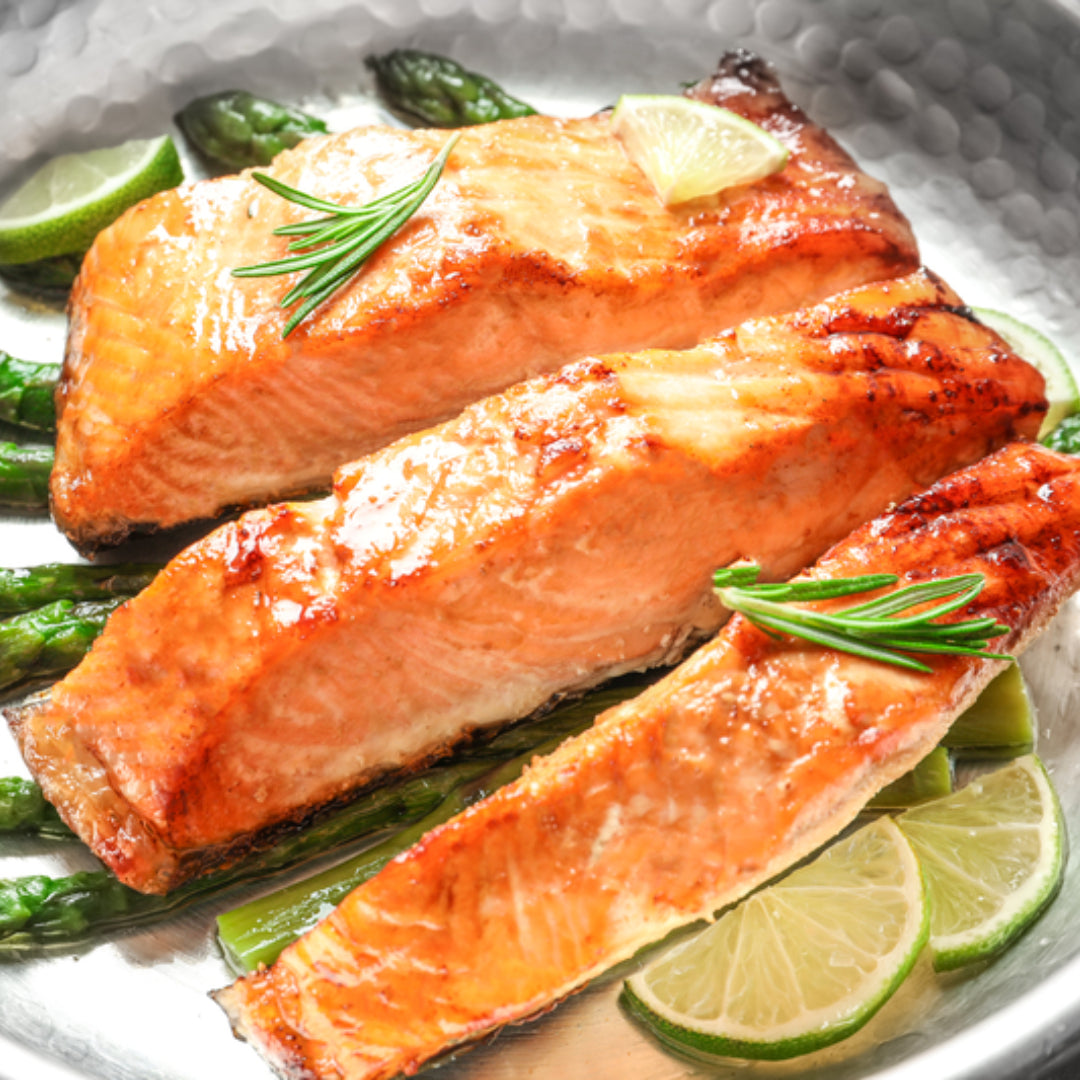Salmon is a beloved fish prized for its rich flavor and versatility in the kitchen. But achieving perfectly cooked salmon can feel like a guessing game.
One key indicator of doneness, however, lies right before your eyes: Cooked salmon color. By understanding the color changes that occur during cooking, you can master the art of perfectly cooked, flaky salmon every single time.
The Importance of Color
The color of cooked salmon tells you how cooked it is. Properly cooked salmon should be opaque throughout, with a shade of pink or orange, depending on the species. It should never look translucent or raw in the center. Here’s a breakdown of what different colors mean:
- Translucent or Raw-Looking: This means the salmon needs more cooking time.
- Light Pink: This is a desirable level of doneness for many. The salmon is cooked through but still very moist and tender.
- Medium Pink: Slightly darker and more opaque than light pink but still juicy and tender.
- Medium-well Pink: More opaque with a firmer texture, but still flaky and flavorful.
- White: This indicates overcooked salmon, which can be dry and tough.
Understanding Doneness Levels
Here’s a closer look at different doneness levels based on color and texture:
- Light Pink: This is achieved by cooking the salmon until it flakes easily with a fork and has an internal temperature of 145°F (63°C). The exterior will be opaque, and the center will have a slight transparency.
- Medium Pink: For this level, cook the salmon for a bit longer than light pink. The color will be a slightly darker and more opaque pink throughout, with no transparency. The internal temperature should reach 135°F (57°C).
Tips for Achieving Perfect Color
- Cooking Time: Cook for a shorter duration to achieve light pink salmon.
- Lower Heat: Use gentler methods like slow roasting or poaching to prevent overcooking and maintain the pink color.
- Resting: Let the cooked salmon rest for a few minutes before serving to retain moisture.
- Temperature Monitoring: Use a meat thermometer to ensure the internal temperature reaches the safe zone (145°F for well-done, 135°F for medium pink).
Cooking Methods for Different Doneness Levels
- Light Pink: Bake at 375°F (190°C) for 12-15 minutes per inch of thickness, grill for 4-6 minutes per side, or pan-sear for 4-5 minutes per side.
- Medium Pink: Bake for slightly longer than light pink, grill for a bit longer per side, or pan-sear for a few extra minutes per side.
Reaching Other Doneness Levels
- Medium-well Pink: Cook to an internal temperature of 140°F (60°C).
- Well done: Cook to an internal temperature of 145°F (63°C). Be mindful of overcooking, which can dry out the fish.
Additional Tips
- Different salmon species may have slightly different natural colors but focus on consistent color change throughout the fillet for even cooking.
- Cooking methods can affect the final color, but the general principle of color change indicating doneness applies.
Conclusion
By understanding the role of color and using the tips provided, you can cook salmon to your desired doneness level, ensuring a delicious, safe, and visually appealing dish every time.
FAQ About Cooked Salmon Color: Understanding Doneness Through Color
Q: Why is the color of cooked salmon important?
A: The color of cooked salmon can indicate its doneness, ensuring it is safe to eat and enjoyable to taste.
Q: What color should cooked salmon be for perfect doneness?
A: Perfectly cooked salmon should have a light pink color. Overcooked salmon tends to become white and dry, while undercooked salmon may appear translucent and raw in the center.
Q: How can one visually determine the doneness of cooked salmon through its color?
A: You can gauge the doneness by observing the color change in the salmon’s flesh. The transition from translucent to opaque and from dark pink to a lighter shade indicates that the salmon is cooked through.
Q: Are there different variations in color based on the type of salmon?
A: Yes, different types of salmon species may have varying shades of pink and orange when cooked. However, the key is to look for a consistent color change across the fillet to ensure proper cooking.
Q: Can the color of salmon vary depending on the cooking method used?
A: Yes, the color of cooked salmon can differ based on whether it is baked, pan-seared, grilled, or poached. Nonetheless, the general principle of color change to indicate doneness holds across various cooking methods.
Q: What is the significance of the color change in cooked salmon?
A: The color transformation in cooked salmon signifies the denaturation of proteins, indicating that the fish has reached a safe internal temperature for consumption.
Q: Is it safe to eat salmon that is slightly pink in the center?
A: It is safe to consume salmon that is slightly pink in the center as long as it has reached the recommended internal temperature and the flesh is flaky. However, it is essential to ensure it is not overly translucent or raw in the middle.

Welcome to Braddock Bay Tavern & Grill, where history, delicious cuisine, and stunning views come together to create an unforgettable experience. Our restaurant, situated on the picturesque edge of Lake Ontario, has a rich history that adds a unique charm to your dining experience. The roots of our establishment can be traced back to 1865, when it was first constructed as an icehouse. Over the years, it transformed into the historic Braddock Bay Hotel, becoming a beloved local landmark. Today, we take pride in preserving the building’s historical beauty, ensuring that every visit to our restaurant is a journey through time.

